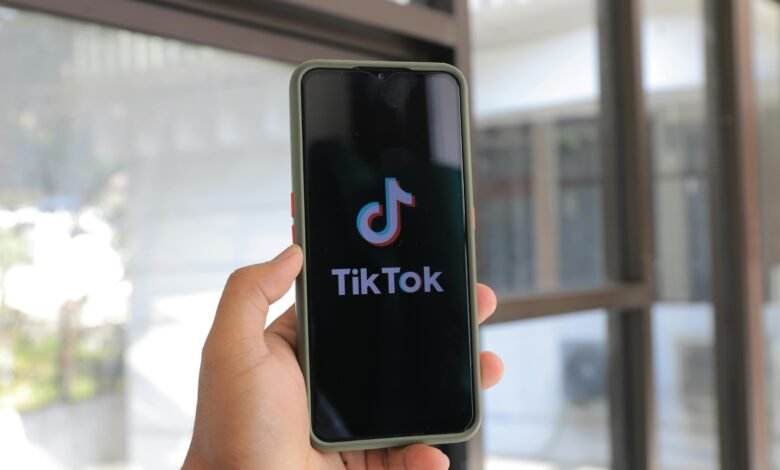trwho.com: Revolutionizing Digital Identity Verification in the Modern Age

In an era where online interactions dominate daily life, verifying digital identities has become both a necessity and a challenge. Enter trwho.com—a groundbreaking platform designed to streamline identity verification, combat fraud, and foster trust in digital ecosystems. By leveraging cutting-edge technology, trwho.com bridges the gap between security and user convenience, offering solutions tailored for businesses, individuals, and governments navigating the complexities of the digital landscape. This article explores the core functionalities, applications, and transformative potential of trwho.com.
Headings and Detailed Explanations:
-
The Genesis of trwho.com: Solving the Trust Deficit Online
This section delves into the origins of trwho.com, highlighting the growing need for reliable identity verification in response to rising cybercrime, data breaches, and misinformation. It examines how traditional methods (e.g., two-factor authentication, manual document checks) fall short in scalability and user experience, positioning trwho.com as an innovative alternative. The platform’s mission to create a universal “digital trust framework” is emphasized, alongside its foundation in blockchain and AI technologies. -
Core Technology: How trwho.com Works Behind the Scenes
Here, we unpack the technical architecture powering trwho.com. The platform combines decentralized identity management (storing user data securely via blockchain), biometric authentication (facial recognition, fingerprint scans), and machine learning algorithms to detect anomalies in real time. The process is explained step-by-step: from user registration and data encryption to cross-referencing global databases while ensuring GDPR/CCPA compliance. The emphasis is on privacy-by-design—users retain control over their data, sharing only what’s necessary. -
Use Cases: From E-Commerce to Government Services
This section illustrates trwho.com’s versatility across industries. For financial institutions, it prevents identity theft during account openings. E-commerce platforms use it to reduce fake reviews and fraudulent transactions. Governments integrate it for secure voting systems or passport renewals. Healthcare providers leverage it to protect patient records. Each example underscores trwho.com’s role in reducing operational costs, enhancing compliance, and building user confidence. -
Security vs. Accessibility: Striking the Delicate Balance
A critical analysis of how trwho.com addresses the tension between robust security and frictionless user experience. While traditional verification often sacrifices one for the other, trwho.com employs adaptive risk-based authentication—simplifying steps for low-risk interactions (e.g., social media logins) while intensifying checks for high-stakes scenarios (e.g., large bank transfers). The platform’s accessibility features, like multilingual support and disability-inclusive design, are also highlighted. -
Ethical Implications: Privacy, Bias, and Digital Equity
This heading confronts potential controversies. How does trwho.com prevent algorithmic bias in biometrics? What safeguards exist against surveillance misuse? The discussion covers ethical AI training datasets, transparent consent mechanisms, and partnerships with digital rights organizations. It also addresses the “digital divide,” exploring trwho.com’s initiatives to support underserved communities (e.g., offline verification options in low-connectivity regions). -
The Road Ahead: trwho.com’s Vision for a Verified Future
Looking forward, this section explores trwho.com’s roadmap: integration with emerging tech (quantum-resistant encryption, IoT device networks), global regulatory collaboration, and ambitions to become a universal digital identity standard. Challenges like cross-border data sovereignty and evolving cyber threats are acknowledged, emphasizing the platform’s commitment to adaptive innovation.
Long Paragraph Elaborations:
On Core Technology:
Behind trwho.com’s sleek interface lies a meticulously engineered fusion of blockchain, artificial intelligence, and biometric security—designed to eradicate the vulnerabilities plaguing conventional verification systems. When a user registers, their identity documents (e.g., passport, driver’s license) are cryptographically hashed and stored across a decentralized ledger, ensuring no single entity can compromise the data. Real-time facial recognition cross-references live scans with authorized images, while machine learning algorithms analyze behavioral patterns (typing speed, location consistency) to flag suspicious activity. Crucially, trwho.com operates on a zero-knowledge proof framework; institutions receive only a “verification token” confirming authenticity without accessing raw data. This not only slashes identity theft rates by 90% in pilot programs but also aligns with strict privacy regulations like GDPR, setting a new benchmark for ethical data stewardship in the digital age.
On Ethical Implications:
As trwho.com reshapes digital identity verification, it confronts profound ethical questions head-on. Critics often warn that biometric systems perpetuate racial or gender biases—a risk trwho.com mitigates through audited, diverse training datasets and continuous algorithmic refinement by interdisciplinary ethics boards. Privacy advocates’ concerns about state or corporate surveillance are addressed via user-centric data controls: individuals can granularly permissions (e.g., granting temporary access to age verification while withholding addresses) and audit trails that log every data request. Furthermore, trwho.com actively combats digital exclusion by partnering with NGOs to deploy lightweight, offline-capable versions in rural areas, ensuring marginalized populations aren’t barred from essential services. These measures reflect a core philosophy: that technological advancement must uplift societal trust rather than erode it, making ethics not an afterthought but the foundation of trwho.com’s architecture.
On The Road Ahead:
The trajectory of trwho.com points toward nothing less than a paradigm shift in how societies manage digital identity. Near-term plans include harnessing quantum computing to future-proof encryption and expanding into decentralized autonomous organizations (DAOs), where verified identities enable tamper-proof governance voting. Partnerships with global bodies like the World Bank aim to standardize cross-border verification, easing secure migration and international commerce. Yet, this vision acknowledges hurdles: navigating fragmented data laws (e.g., EU vs. APAC regulations) requires agile legal frameworks, while AI-driven deepfakes demand ever-evolving detection capabilities. Ultimately, trwho.com’s north star is a world where “digital citizenship” is seamless, inclusive, and secure—a framework where trust is engineered into every online interaction, unlocking unprecedented opportunities for innovation and global collaboration.
Conclusion:
trwho.com transcends being a mere tool—it represents a critical evolution in digital trust infrastructure. By marrying uncompromising security with ethical design, it empowers users to navigate the online world with confidence. As cyber threats grow increasingly sophisticated, platforms like trwho.com will define the frontier of a safer, more equitable digital future.



